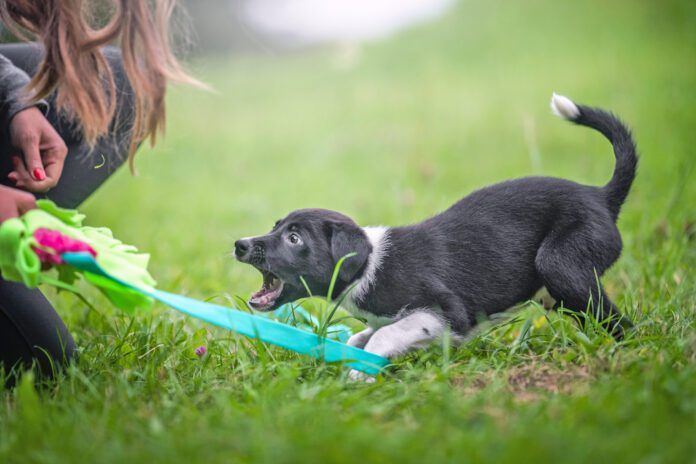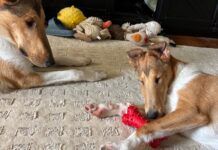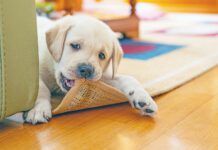Puppy training begins when a dog is born. Every interaction your puppy has with other dogs and people is training. Your pup’s mom supervises play, stopping pup who gets “out of hand,” encouraging cleanliness (aka potty spots), and socialization.
How to Train a Puppy
While puppies don’t need serious obedience training at 5 weeks of age, simple training should start right away. Basic lessons begin as soon as the you bring your new family member home, whether it be the 10-week-old pup from a breeder or a 6-month-old that you’ve adopted.
Positive reinforcement is key to teaching your puppy the behaviors you want. Dogs of any age appreciate praise, treats, and toys. If your new to having a puppy—or it’s been a long time—it can help to sign up for a puppy class and work with a trainer who can advise you and help with problems that might appear during your puppies training.
What Is Puppy Socialization?
Socialization is a big part of training your pup, and it starts on Day 1. The golden window for socialization is around 12 to 16 weeks, which means this is the best time to gently expose your puppy to new sounds, sights, and adventures. While socialization never ends, this timeframe is extremely important to the puppy’s development. A puppy training class gives your puppy socialization with other dogs and an experienced trainer to keep everything under control and positive.
Make Puppy Training Fun
The goal of all puppy training should be fun and build confidence including housetraining. Programs like Early Neurological Stimulation (ENS) and Early Scent Introductions (ESI) start basic training right away. An Adventure Box provides some novelty as well.
Exposures to different surfaces, people, and food bowls all add to a puppy’s basket of experiences. Gentle handling gives a puppy positive associations with people. While you don’t want to overwhelm a puppy, you do want to provide options and different choices.
Many breeders get a pup started with various play gym obstacles, like low boxes to climb into or on top of, tunnels, wobble boards, etc. At least initially, these novel items are simply just there. The puppies can choose to explore them on their own with no pressure. Watching a bold sibling will often inspire a quieter pup.
When your puppy is in your home, you can start increasing his socialization by going to stores, like Home Depot, that allow dogs in to let your puppy experience new sites and sounds. Walks in quiet parks allow your puppy to watch people, dogs, and wild critters and see what’s happening around them. Never force a puppy to “deal” with something or endure a loud noise. Let the puppy make his own choices. If he’s afraid, don’t push the issue. Remember, you’re building trust.
Manding Is a Voice for the Puppy
Many owners and breeders now work on positive techniques such as “manding.” Basically, manding is where a puppy learns to use a behavior to get what the puppy wants. For example, sitting is commonly used, since it is a relatively easy thing to teach and it’s a readily identifiable behavior. Most puppies will include eye contact.
For example, puppies naturally try to jump up on you to get your attention, but if you ignore that jumping and give him attention (or a treat) when he sits and looks at you, he will learn that sitting is way to communicate that he wants your attention (or a treat).
Manding can circumvent undesirable behaviors. Puppies taught with manding principles will learn appropriate behaviors to communicate what they want. Proponents see manding as the puppy being empowered to get desired response by presenting this behavior.
No-Stress Training
An important consideration in training your puppy is not to stress him physically or mentally. Just like young children, puppies do not have long attention spans. Doing training in 10 five-minute sessions (or even shorter) over the day is preferable to doing a one-hour long marathon.
No Heavy Physical Training
Puppies mature at varying ages. Physical stress can lead to permanent bodily damage. While it is tempting to take your 3-month-old puppy on a mile run to gain a couple hours of quiet exhaustion, that is not appropriate for his age and undeveloped bones. Loose walks with plenty of food recalls are perfect as long as they’re short.
A puppy’s growth plates, which are located at the ends of his limbs, close anywhere from 8 to 18 months depending on breed. Your pup shouldn’t be jumping, running at speed, or working for long periods of time before then or you risk damaging the puppy’s limbs.






